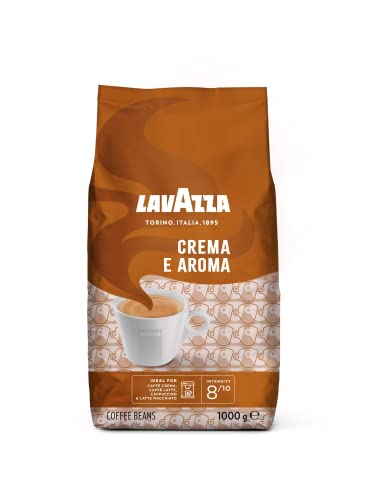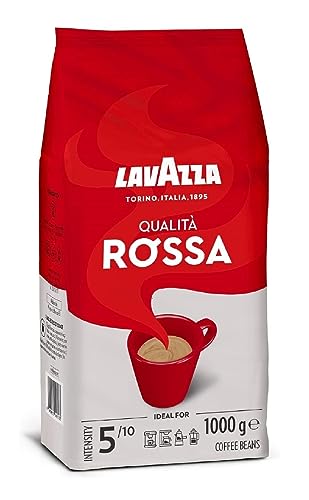The No. One Question That Everyone Working In Types Of Coffee Beans Sh…
페이지 정보

본문
 Types of Coffee Beans
Types of Coffee Beans Behind every cup of coffee we drink, there is a carefully graded bean to cup coffee beans. The beans are evaluated according to their size and shape, color, shape and density.
Behind every cup of coffee we drink, there is a carefully graded bean to cup coffee beans. The beans are evaluated according to their size and shape, color, shape and density.The AA rating is given to coffee beans that fulfill the criteria above, with the exception that they cannot contain more than 3 defects (quakers). These are usually Kenya AA beans.
Arabica
Arabica coffee beans are also known as Coffea Arabicica and are the most sought-after coffee in the world. According to legend, coffee was discovered by the goatherder of Ethiopia after he observed that his animals had more energy when they consumed the fruits of the plant. This inspired him to explore roasting and making the seeds, resulting in the drink we all know and cherish today.
While many varieties of coffee plants exist but there are only two main species that are used as the base for our favorite drinks: arabica and robusta. The taste of the final beverage is typically better with the first.
There are many varieties of arabica cultivars, each each having its own unique flavor profile. Two of the most famous varieties are Typica and Bourbon which are the basis for all other arabica varieties have been created, either by natural mutation or deliberate crossbreeding. The SL28 cultivar, for instance was developed in Kenya by Scott Labs and is known for its distinctive chocolate taste.
The taste of the arabica variety is contingent on the environment in which it was grown and also on how it was handled and roasted. The shade a tree receives will have a major impact on the final product.
Robusta
Robusta coffee beans, also referred to as coffee canephora, are the second most widely used type of coffee. They are used in the majority of instant coffees and have twice the amount of caffeine as Arabica Coffee Beans. They are also used to make many blends of espresso specifically for cappuccino caffe latte and other coffee drinks.
Coffea Canephora is a plant that originated from Sub-Saharan Africa. It has been cultivated across the world since. It can be grown at lower elevations and tolerate higher temperatures than Arabica coffee plants, which makes it a better choice for farmers. Vietnam is currently the largest producer of robusta coffee followed by Brazil and Indonesia.
Although the robusta plant has its merits However, it's not adored by cupping aficionados for its bitter taste and burnt rubber notes. It is often considered a poorer quality coffee, and a majority of the major coffee companies make use of arabica beans to create premium coffee beans products.
However, the demand for gourmet coffee is growing, and smaller roasters are testing robusta varieties that are high-end to make the most of its exceptional qualities. Our Valhalla Java and Death With Coffee are two examples of exceptional robusta coffees. They are blended with arabica to create the perfect blend of flavour and strength. The coffees are carefully procured from Uganda, where robusta is cultivated for hundreds of years. Read more about these coffees.
Liberica
Liberica coffee beans are scarce and are rarely used around the world. They comprise less than 2% of global coffee consumption and are often overlooked since they don't have as much caffeine as Arabica and Robusta do. These beans have a unique taste that many coffee drinkers find appealing.
Liberica coffee beans, despite being extremely rare and extremely scarce, are still quite popular in a few regions of Asia. They are most expensive coffee beans popular in Malaysia and Indonesia with significant Muslim population. In these countries the coffee industry has been very active for many years. The consumption of a cup of coffee after prayers is a part of their culture.
Liberica coffee's history dates back to the 1890s in the 1890s, when a global outbreak caused by coffee leaf rust decimated the arabica crop. This triggered the coffee industry to seek out an alternative species that could thrive in tropical climates. They quickly discovered the Liberica plant.
Liberica plants are resistant to pests and diseases which makes them an ideal replacement for the destroyed arabica crop. Liberica can also grow in lower altitudes as well as hot temperatures, which allows it to thrive in Southeast Asia's climate. This is why, today, most of the top rated coffee beans grown in the Philippines, Indonesia, and Malaysia is derived from Liberica beans.
Excelsa
While it's not usual for coffee drinkers to find excelsa beans in their cups, these unique beans are beginning to earn a reputation for their unique flavor. According to Komal Sable, a fifth generation coffee farmer with South India Coffee Co. They are "a variant of the liberica species, and have the same teardrop shape, however, they are smaller." But despite the family resemblance it's important to know that excelsa is technically not a separate species.
As such, it's a little bit confusing as to how excelsa beans should be categorized and it's this confusion that has largely been the reason for the beans' absence in the world of strong coffee Beans. Many roasters, growers and brewers have no idea how to properly cultivate and utilize these beans.
It is ultimately up to the individual to decide whether they like the flavor of the coffee excelsa and it might take a time to find a blend that fits their tastes. The most important thing is to remain open-minded and give each type of coffee a shot until you find one that you truly enjoy. You'll discover the vast array of possibilities the unique beans have to offer. It's an experience that's worth the ride.
- 이전글What Is Gas Safety Certificate For Landlords' History? History Of Gas Safety Certificate For Landlords 24.12.10
- 다음글The Most Significant Issue With Cheap Couches, And How You Can Fix It 24.12.10
댓글목록
등록된 댓글이 없습니다.
